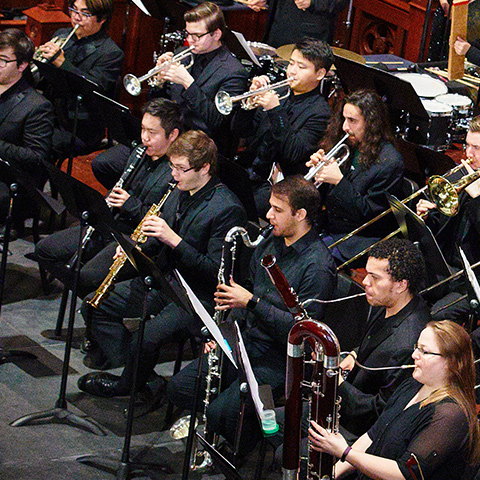GABRIEL TOMÁS GARZA (B.M. '26): Las Estrellas y La Luna, Ellas Le Dicen Donde Va
My sister and I were born in the city of Houston, Texas, but we ended up living out our childhood in the town of Richmond, Texas, about a half hour southwest of downtown Houston, situated on the muddy banks of the Lower Brazos River. As I normally do, for this piece I chose to base my inspiration from my own past and experience, to tell my story. My sister and I were—and still are to this day—very close. So, when the time came for her to pursue higher education away from home, it was a difficult concept for me to wrap my head around. Currently studying at the University of Washington in Seattle, to receive a master's degree and later a Ph.D. in astronomy/astrophysics, the stars dictate where my sister's life takes her—far away from home in Richmond and even farther from myself in Boston. Hence the title, taken from "Cancion Del Mariachi," "the stars and the moon, they tell her where she goes." Celestial synchronicity, love, and pride. All this and many little, miscellaneous sounds from my life have found their way into this work.
On a final note, special thanks to Victoria Cheah, Dr. Dan VanHassel, Diego Davila, the Albert Alphin Library and staff, Kevin Cranston, Chelsea Frazier, my mother and father, and my sister, Samantha Lucía Garza, all without whom I would not have been able to complete this piece. In all aspects of the creation of this piece, I feel incredibly blessed and looked over by my beloved ancestors and wonderful friends and family. I hope you enjoy.
—Cesar Rosas
JACKSON ALFREY (B.M. '25): Perspective Mvt. 1: The Boy
Written as a response to a multi-section poem with the same name, Perspective attempts to describe its titular theme with an emphasis on how it changes with age. Mvt. 1: The Boy describes naivete, optimism, and a more energetic time and place. Mvt. 2: The Man describes weighty experience, loneliness, and an overall pessimism. The tension, narratively, comes from turning each of these stories on their heads. "The boy" is exposed to wonder in the climax of the piece, while "the man" is exposed to naive kindness. It's the tension that links the two. It's asserting that these two need each other to live complete lives, which this writer believes to be true.
The Boy is written narratively, describing rowdiness, curiosity, creativity, defiance, naivete, and wonder. The largest contributor to these effects were the colors of the ensemble. Transitioning themes from the brass to the winds to the saxes allows these themes to see growth just as effectively as the changing harmonic contexts. The ensemble is used sparingly, to allow an overbearing feeling when most of the ensemble comes together in the climax. Mvt. 2 is yet to be written.
—Jackson Alfrey
TREY ANTHONY FLORES (M.M. '24): Obsidian Shores
“a beautiful contradiction”
—Trey Anthony Flores

